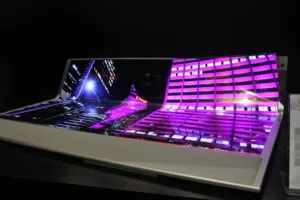As soon as you walked into the exhibition area at Display Week 2018 you were confronted with an impressive flexible display substrate, the one used in LG Display‘s flexible 77 display (Fig. 1). In addition to having 8 million pixels and a bending radius of approximately 80mm, the panel had a transparency of 40%. The transparency is obtained by placing a transparent, inactive area adjacent to each sub-pixel’s emitting area. You can read more in the accompanying article on OLED displays.
Fig. 1. LGD’s 77-inch fexible screen with 8 million pixels and 40% transmittance greeted attendees at the Display Week exhibition. (Photo: Ken Werner)
BenQ Materials featured its high durability functional films, including a wide-viewing-angle polarizer that maintains color fidelity when viewed off angle (Fig. 2) The company’s True Black Functional Film reduces ambient reflection and internal light leakage, while reducing screen luminescense by only 10%, said Brand Management Director WeiYin Tsou. A side-by-side demonstration was impressive (Fig. 3.)
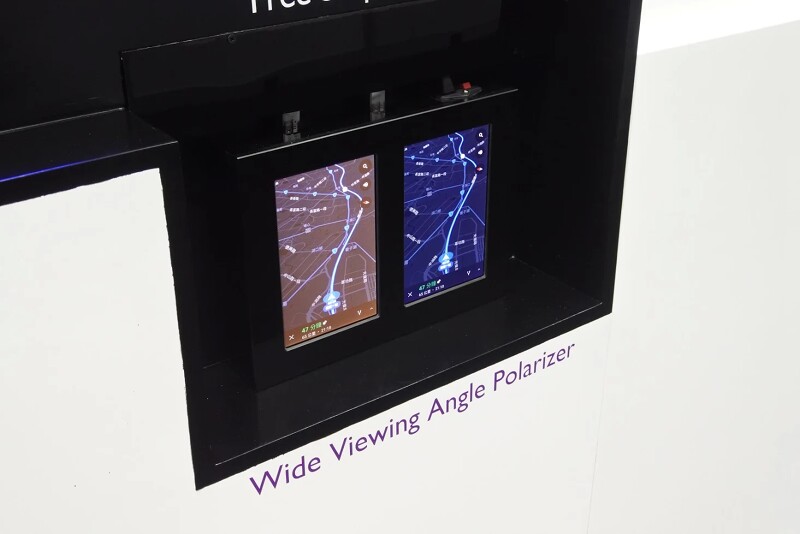 Fig. 2. BenQ Material’s wide-viewing-angle polarizer (right) maintains color fidelity at large viewing angles. (Photo: Ken Werner)
Fig. 2. BenQ Material’s wide-viewing-angle polarizer (right) maintains color fidelity at large viewing angles. (Photo: Ken Werner)
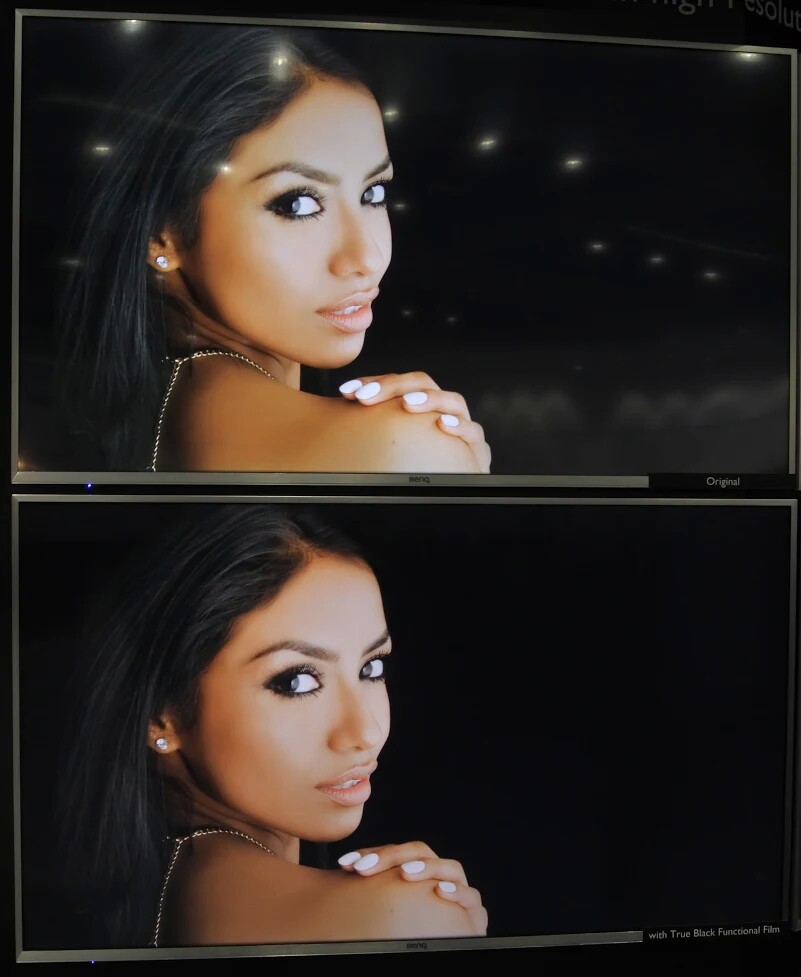 Fig. 3. BenQ Material’s True Black Functional Film (bottom) reduces ambient reflections and internal light leakage. (Photo: Ken Werner)
Fig. 3. BenQ Material’s True Black Functional Film (bottom) reduces ambient reflections and internal light leakage. (Photo: Ken Werner)
BenQ‘s UHDEP — UHD Enhancement Polarizer — is designed to improve the off-axis color of 4K vertically aligned (VA) displays, such as Samsung’s. With UHD, most LCD panels use only four VA domains instead of 8, said Chairman & CEO ZC Chen, which is why the film is needed. Other products currently available are a very flexible polarizer and a flexible hardcoat that is foldable and stretchable.
The company was also showing a flexible smart-window film based on PNLC — a reverse-mode PDLC that is clear when the power is off, a desirable characteristic for automotive smart windows after a power-disrupting accident.
Kolon. Polyimides (PIs)are thermally stable, have good chemical resistance and excellent mechanical properties, including high flex strength. They would make excellent display substrates except for their orange/yellow color.
In its booth, the Korean company, Kolon, was featuring a colorless PI (CPI) that will be ready for mass production in June, according to Principal Researcher Sang-Kyun Kim. The material will be available in widths up to 1.55 meters, and its mechanical properties allow it to directly replace glass, said Kim. Kolon’s competitors are not yet ready for volume production, said Kim, and their mechanical properties are not yet as good.
The company will also sell a CPI varnish and a CPI hardcoat sheet. In the booth, the company showed a folding test of an OLED display with CPI HC film as a cover window (Fig. 4).
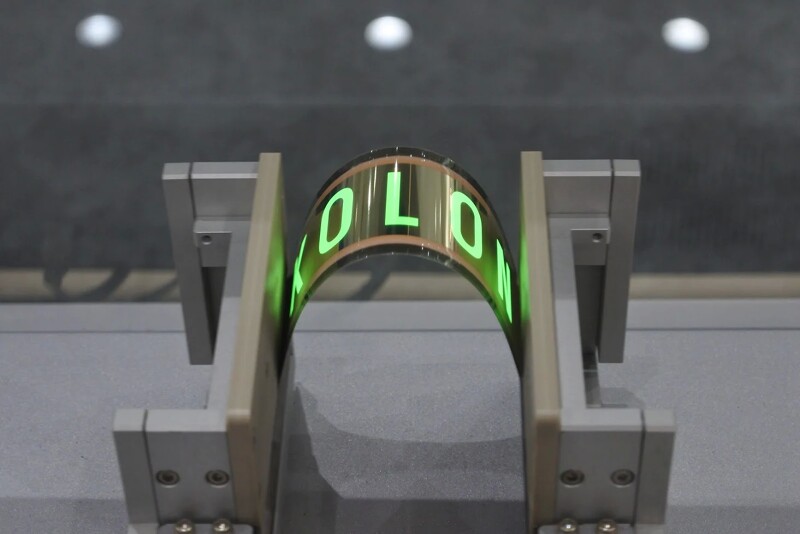 Fig. 4. Kolon’s colorless polyimide hardcoat film served as a flexible cover glass for an OLED display. (Photo: Ken Werner)
Fig. 4. Kolon’s colorless polyimide hardcoat film served as a flexible cover glass for an OLED display. (Photo: Ken Werner)
Merck showed its latest generation of its licrystal exterior smart windows. The material was remarkably haze free in its transparent mode and more opaque than previously in its opaque mode. The material has demonstrated an equivalent of 10 years life in accelerated life testing, said Merck/EMD’s Bob Miller.
Corning‘s Iris glass for glass light guide plates is now, for the first time, now being used in commercially available monitors (Dell Slims Monitors to a New Level). Corning says Iris glass allows product makers to reduce thickness, increase brightness, and design products with thinner bezels. Shown in the booth was a Dell 27 Ultrathin monitor with a thickness of 5.5mm (at the thinnest point). Resolution is 2560 x 1440. A Lenovo 24″ ThinkVision monitor had a thickness less than 4.0mm.
Pilkington, the UK specialty glass company that has been a subsidiary of Nippon Sheet Glass since 2006, was featuring an AR glass that does not introduce a color tint.
Schott Glass displayed its Conturan chemically-toughened, low reflectivity, and neutral-color cover glass. In other words, this is Schott’s competition for Corning’s Gorilla Glass.
For augmented reality (AR) applications, Schott was agressively prommoting its RealView family of glasses (Fig. 5). RealView glass is intended for lenses in eyeglasses or goggles that will transfer AR imagery laterally to a position in front of the user’s eye, where an optical structure will direct the image to the eye.
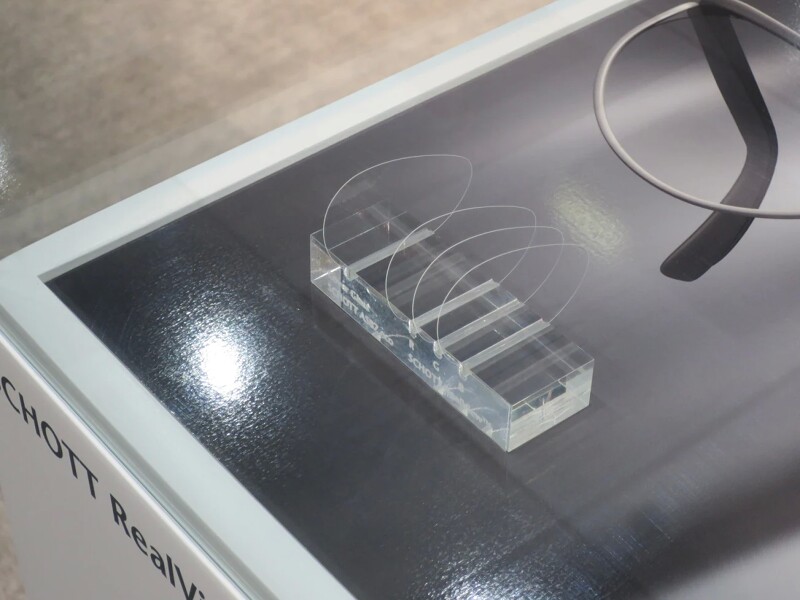 Fig. 5. Schott’s RealView glass, intended for AR displays, is smooth, flat, and has a high index of refraction. (Photo: Matt Brennesholtz)
Fig. 5. Schott’s RealView glass, intended for AR displays, is smooth, flat, and has a high index of refraction. (Photo: Matt Brennesholtz)
These waveguides must be planar, and they require a high refractive index for a wide field of view (FOV). The thickness must be precise, and flatness must be plus or minus one micron. This is ten times the flatness required in semiconductor processing, Augmented Reality VP Rudiger Sprengard told Display Monitor. Shott calls this “Waveprint technology”, and it is currently used in motorcycle glasses for AR. The company is also developing materials for automotive AR, where it would make possible a much smaller light box than is possible with conventional approaches. At the consumer level, AR technology must be miniaturized, and, said Sprengard, waveguide technology is most likely to be successful.
Business Development Manager Brian Sjogren told my colleague Matt Brennesholtz that the glass is special from melt to coating. This control of the entire manufacturing chain, said Sprengard, is the company’s competitive advantage. The company has been working on the technology for two years. The product has been developed and it is ready for customers.
In its large booth, AGC (previously Asahi Glass Company) showed its XCV glass, which is its answer to Corning’s Iris Glass. AGC’s wrinkle is that the glass contains a prism structure. The XCV glass directs the light from edge backlights more accurately and this can help TV or monitor set makers to develop better zonal backlight systems.
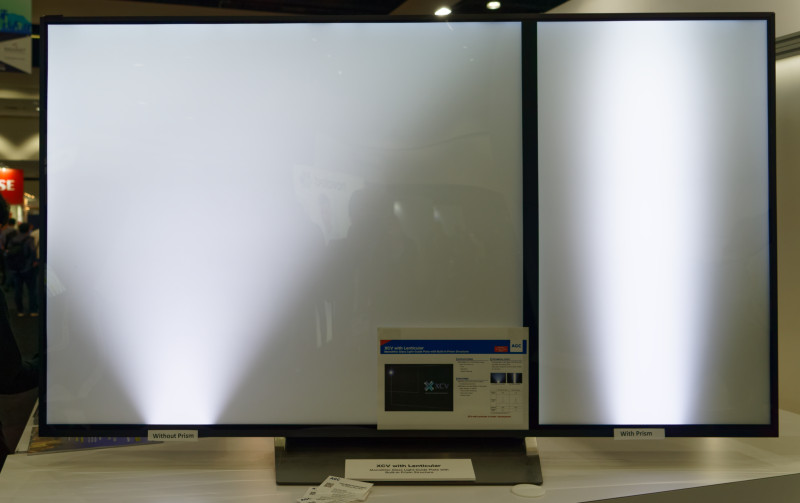 AGC’s XCV glass has prisms to better direct backlighting. Image:Meko
AGC’s XCV glass has prisms to better direct backlighting. Image:Meko
AGC also showed its curved glass in Continental’s multi-curved automotive cockpit display, versions of which were shown in Continental’s giant suite at CES.
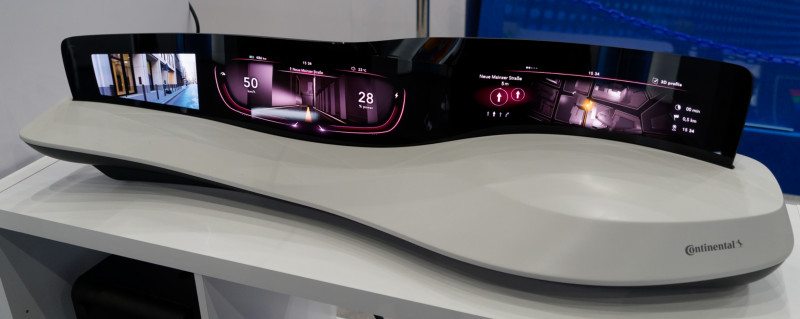 AGC’s Automotive concept. Image:Meko
AGC’s Automotive concept. Image:Meko
Also on display were windows with displays behind them, which gave a convincing impression of foliage on the other side of the window. AGC calls these “Gla terrace” Windows. Applications are basements, hospitals, offices, and closed spaces such as elevators.
AGC also demonstrated a glass speaker. The general idea here is the same as LGD’s Crystal Sound, but AGC has worked for very high quality sound and an executive-suite look. AGC says it has realized the ideal of the “glass diaphragm” by suppressing the resonance of the glass. (Asahi Glass Company Announces Corporate Name Change
Finally, it seemed that SID had established a new regulation that required every Chinese display exhibitor to show a flexible OLED. Ok. SID didn’t do that. But BOE, Tianma, Visionox and others all had flexible OLED demos (Fig. 6). One or two even claimed they were products. Whether or not that’s true now, it will be. — Ken Werner
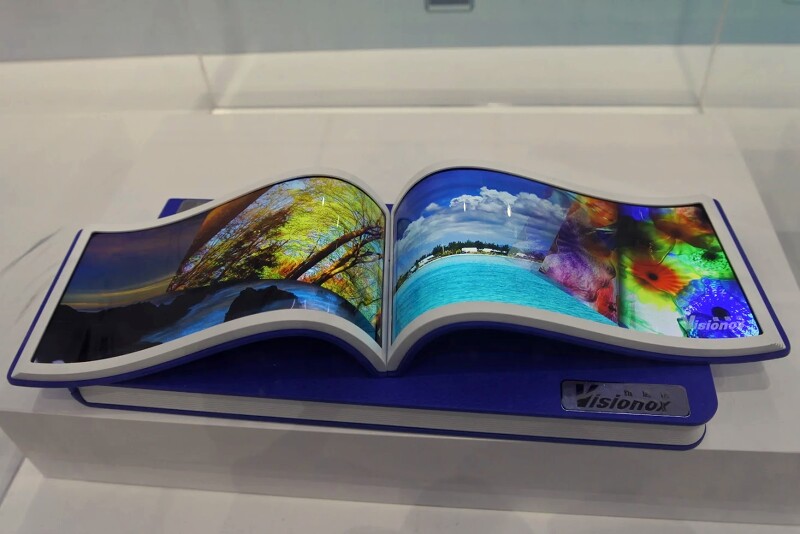 Fig. 6. The pages of Visionox’s flexible display eBook were each 5.99 inches on the diagonal with a resolution of 1080 x 2160 and a thckness of 0.4mm. Only the top pages seemed to be displays.
Fig. 6. The pages of Visionox’s flexible display eBook were each 5.99 inches on the diagonal with a resolution of 1080 x 2160 and a thckness of 0.4mm. Only the top pages seemed to be displays.

